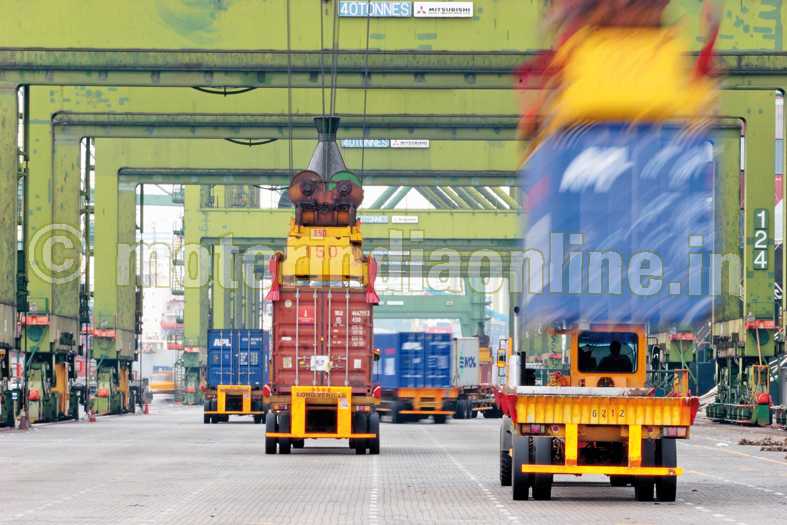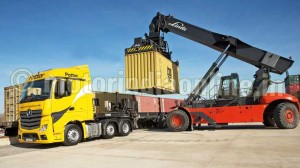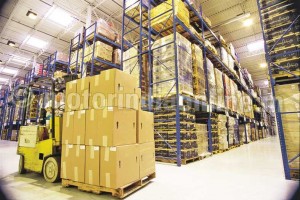
With the Indian economy transforming itself into a major power with mega infrastructural projects, growing investments and several other significant developments, the Indian logistics industry expects a big rise in demand in spite of infrastructural constraints. Logistics demand has in fact been fuelled by the growth of industries like automobiles, aviation, consumer packaged goods, hi-tech, telecom and Defence as well as by the entry of MNCs in areas like sourcing, manufacturing and distributing.
The logistics industry has been carefully tackling a lot of challenges like poor road networks, bureaucracy, inter-State border disputes, cumbersome documentations, lack of warehouse facilities, etc. The size of the logistics sector in India is said to be $90-125 billion. Considering the growth of the Indian economy to over $1.73 trillion, this is really an under-estimation of the logistics industry which employs 45 million people and grows at a rate of 15 per cent per annum. Looking at its current growth rate and future growth prospects, India is currently considered the most attractive in the world and might emerge as a major logistics hub in the future.

Key growth factors
The roads and railway network is considered most important compared to the other modes of transport. Roads account for 60 per cent of the total freight movement in the country. The corresponding development of roads recorded a CAGR of two per cent, from about 3.7 million km in 2001 to 4.7 million km in 2012, with an overall increase of 4.2 per cent in the past six decades. As demand for goods either for mass consumption or for industrial development grows beyond the conventional demand supply from the hubs of metropolitan cities to Tier-1 and Tier-2 cities, the share of road transport can go up further, given its ability to facilitate the last-mile reach.
As for rail transportation, Indian Railways operate 19,000 trains every day, transporting 2.65 million metric tonnes of freight. This is expected to reach one billion tonnes, with a 31 per cent share of the total freight movement across all modes of transportation, and a modest CAGR of seven per cent approximately.
As for the air cargo and water transportation sector, in spite of having 128 airports, 13 major ports and 187 non-major ports, the contribution from both the modes is negligible considering the operational deficiency in delivering optimum quality.

New trends
Warehousing storage, third party logistics (3PL) and logistics parks are the three fastest emerging segments taking the Indian logistics industry to new horizons.
The demand for industrial warehousing space is estimated to grow from 391 million sq.ft. in 2010 to 476 million sq.ft. in 2013 at a CAGR of 6.8 per cent. Among the sectors analysed, the highest growth is expected from engineering goods and IT, electronics and telecommunications. These two sectors are estimated to grow at a CAGR of 8.6 per cent and 8.2 per cent respectively during 2010-13. The share of warehousing is expected to grow at a rate of 30 per cent by 2015 considering the rising domestic and EXIM freight volumes, increased outsourcing of 3PL players and investments in infrastructure.
With the increasing awareness among Indian companies of the benefits of logistics outsourcing and 3PL, the business dynamics is expected to reach Rs. 190-195 billion by 2014-15. Some of the main outsourcing activities include warehousing, forwarding and in-bound and out-bound transportation.
Similarly, 110 logistics parks spread over approximately 3,500 acres at an estimated cost of $1 billion are expected to be operational, with a majority of these parks planned in close proximity to major State capitals and Tier-II and Tier-III cities in order to reduce the cost.

Growth regulators
In the coming years, with India emerging as a manufacturing hub and improving multimodal transportation infrastructure, the logistics industry is poised for more accelerated growth. With the advent of technology, e-commerce has taken prominence as consumption patterns have changed, thereby giving thrust to e-tailing, which will eventually be beneficial for the overall logistics sector. With the upcoming dedicated freight corridors (DFCs) along the eastern and western routes, goods are transported quickly from factories to ports, warehouses and other locations. This ensures speed and efficiency due to a separate lane for freight traffic.
After execution of the Delhi-Mumbai Industrial Corridor (DMIC) project, plans for seven new cities have been finalised and work on two new smart industrial cities is expected to start soon. This project has massive potential when it comes to exceeding growth rate in freight distribution and optimising distribution network. This will lead to the setting up of industrial parks and logistics bases backed with well-developed infrastructure, aiding the overall industrial growth.
Apart from DFC, transport corporations have welcomed the idea of introducing FDI in single and multi-brand retail. FDI in retail will have a positive impact on the logistics sector too as it will ensure higher productivity and a more efficient distribution network.
With the proposed introduction of a singular Goods and Services Tax (GST), the entire logistics industry can be assured of a unified tax structure that helps bring down overall costs considerably. Finally, with the expected passage of the National Food Security Bill, storage transportation and delivery of foodgrains in large quantities will receive a big boost.
Also, with the Pradhan Mantri Gram Sadak Yojana which provides good, all-weather road connectivity to unconnected villages, the Indian logistics industry is set to spread its wings wider.